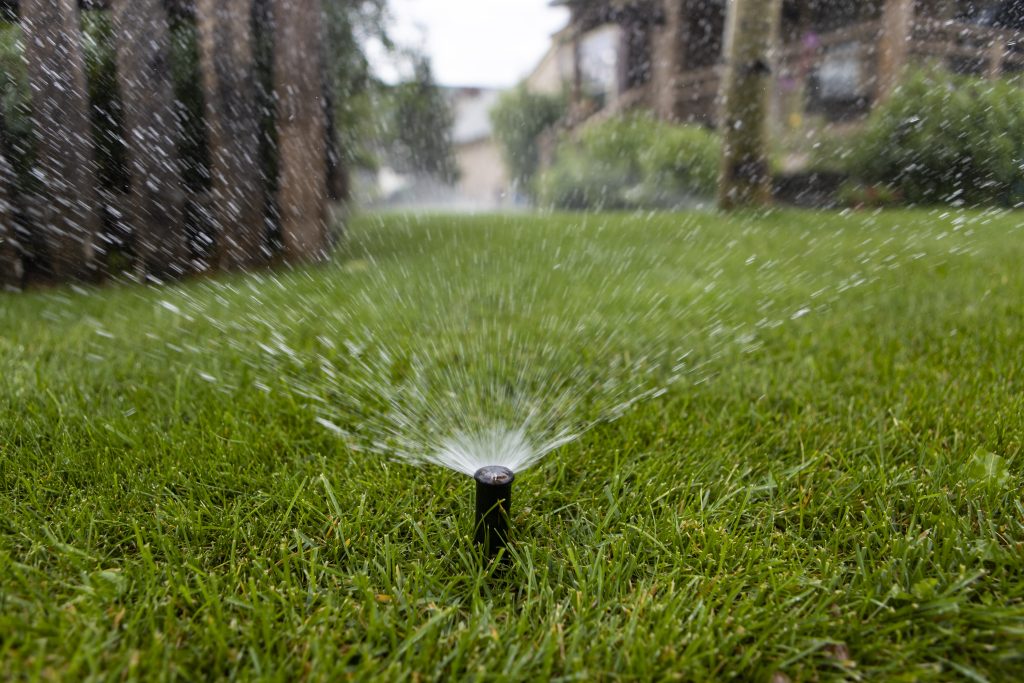
Dear Eartha, now that the sun has returned, some of my grass is scorched. The shaded parts are okay, but not the areas in full sun. Help!
A rainy spring wore many of us down, yet now that the sun has returned, I miss the soothing sounds of rain on my rooftop. With the official start of summer, the intense sunshine is not only melting out trails, it’s also drying out the soil in our yards and gardens.
What you just described — dry, parched grass right next to a shaded moisture-rich lawn — is essentially a microclimate. Microclimates are small areas of land where the conditions vary from the overall climate of a region. A cave is an example of a microclimate. So is a valley where cold air settles.
Within our own yards, different intensities of sun and wind create microclimates. That means you’ll need to plan your lawn care around these specific conditions. As for the brown spots, perhaps it’s a simple fix to your irrigation system. Alternatively, you may benefit from replacing portions of your grass lawn with sun-loving wildflowers. So, where do you even start?
Get a grip
On your irrigation system, that is. For the DIY-ers who manage their own irrigation systems, it’s critical to understand best practices, common problems and simple fixes. For example, sprinkler heads can break, tilt or sink over the winter. Even the best-designed system won’t get water to the right places if it isn’t maintained. For those who work with a professional, communicate any issues so your landscaper can diagnose and resolve the problem.
Dialing in your irrigation system can save big bucks. After all, water rates continue to rise as the West learns to live with less water. If you’re drowning parts of your yard to the point that water is running down the sidewalk, you’re sending money down the drain.
The High Country Conservation Center offers Water Smart assessments by landscapers certified in efficient irrigation. A local expert will visually inspect your system. They’ll make on-the-spot adjustments and send a report to help you maintain a beautiful space without wasting water. The best part? The report is your ticket to hundreds of dollars in rebates to cover both assessment costs and system upgrades. Visit HighCountryConservation.org/water for scheduling and details.

Go native
Expansive lawns of bright green grass may look great in the northeastern United States. Here in the heart of the arid Rocky Mountains, let’s celebrate our state’s unique beauty. After all, hikers travel deep into the mountains in search of summer wildflowers. Why not bring that beauty to our backyards?
Native plants are naturally suited to our mountain climate, leading to big savings on watering (and less maintenance) compared to grass lawns. Not only do native plants require less water and fertilizer, they’re also more resistant to pests and disease.
If you’re thinking of replacing some of your sun-scorched grass with a little patch of wildflowers, the Colorado Native Plant Society offers an excellent guide to low-water native plants for our mountain area. The guide includes two different landscape plans along with a photo gallery of landscape ideas. Another option, Plant Select is a brand of low-water plants designed to thrive in our region. Many of their plants are native to Colorado. For those who want a little more support, call up one of the local landscapers certified in efficient irrigation. Not only do these pros know the ins and outs of smart watering, they can design and install a garden inspired by Colorado’s natural beauty.
Nurture the soil
Whether you’ve got grass, flowers or a mix of both, keep your yard healthy by showing it some compost love. Compost improves the soil’s structure, meaning that any water you apply will be better absorbed into the soil and used by your plants. It also helps soil retain moisture, meaning that you can likely water less frequently. The Summit County Resource Allocation Park is an excellent resource for affordable compost, which is made locally from dead trees and food scraps.
No matter what the weather forecast holds, a few changes to your irrigation system and/or yard design can help you avoid brown spots while saving on water costs. Greening up your lawn, which may mean ripping out some grass, is a win-win for you and Summit County.
